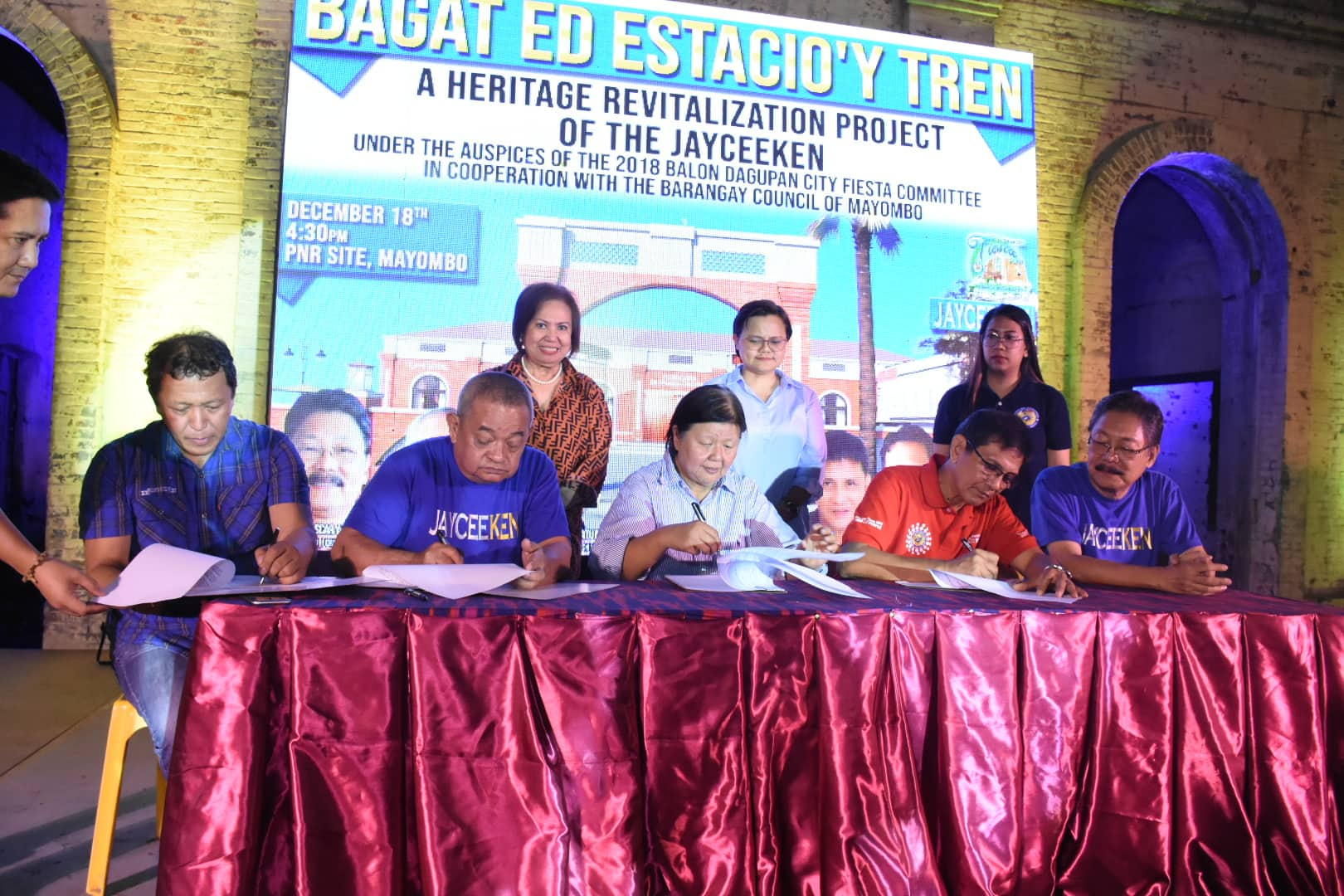Dagupan City’s Old PNR Building set to be revitalized
DAGUPAN CITY – The old PNR (Philippine National Railway) depot in Barangay Mayombo is set to be restored to its former glory under a revitalization project proposed by the Jayceekens, senior members of the Dagupan Jaycees.
The project was outlined to the public during the program ‘Bagat Ed Estacio’y Tren’ held at the PNR site on December 18 as part of the celebration of the city’s month-long fiesta.
Architect EJ Langit of the City Planning and Development Office presented the project, the first phase of which includes the rehabilitation of the now dilapidated depot building, and once completed, will be turned into a museum and souvenir shop, both of which will occupy two chambers. A reception area and a café will also be included in the restored edifice.
The open area outside will also be transformed into a mini-park and a flexible multi-purpose area where events can be held.
The project also proposes the transfer of the vintage train engine, which is currently displayed in front of the City Museum, to the PNR site, its rightful place.
The second phase of the project would include the restoration of the old pay station, platform and surrounding area.
Project Chairman Rex Catubig disclosed that the Jayceekens sought to reaffirm the cultural and historical significance of the PNR area, which transformed Dagupan as a melting pot of people and businesses in Pangasinan and Northern Luzon.
“The opening of the Ferrocarril de Manila-Dagupan opened the corridor of culture and commerce from the big city (Manila) to the North. And it established Dagupan as the hub (of trade and commerce) in the region. It has its romantic side, too. Some of the historical figures at the time took the train to reach the North. It was often said that Jose Rizal commuted via train to visit Leonor Rivera,” added Catubig.
Meanwhile, Mayor Belen T. Fernandez pledged a P10-million seed fund for the Jayceeken’s project seeking to revitalize the PNR site.
“I’m willing to allocate P10-million to help the Jayceeken start up this project. They are very devoted and sincere in restoring this heritage site of our city. I believe they are the vanguards of this initiative.” said Fernandez.
Former House Speaker Jose de Venecia also pledged the same amount as his counterpart for the project.
Fernandez also said that the city government intends to rehabilitate and preserve other heritage sites in the city, such as the remnants of the Franklin Bridge, the 92-year old then municipal building which transformed into the Dagupan city hall, the former Vicar Hotel, Gabaldon Building, jackstone embankments in the shores of Bonuan Tondaligan, lighthouse in Bonuan Gueset, and many others.
A Memorandum of Agreement (MOA) was signed by Mayor Belen T. Fernandez, Jayceeken President Asterio Fernandez and Mayombo Barangay Chairman Samuel Guadiz for the project.
Witnessing the signing were 2018 City Fiesta Hermano Mayor and Chairperson on the Committee on Arts, Culture and Heritage Councilor Jeslito “Jigs” Seen, City Administrator Atty. Farah Decano, Jayceeken Founder Oscar Arcinue, Project Chairman Rex Catubig and Vice President for Academic Affairs Aurora Samson Reyna of the University of Luzon.
The MOA details the roles of the three parties in working together for the rehabilitation of the PNR site.
Under the MOA, the city government is tasked to secure the approval of the rehabilitation and restoration plan from the PNR; the Jayceekens shall work closely with the City Tourism Office throughout the entire project and the Mayombo Barangay Council shall maintain cleanliness and security at the PNR site.
The agreement takes effect immediately upon the grant of the approval by the PNR to allow the city to restore, rehabilitate, and introduce relevant improvements at the Dagupan PNR site.
The PNR began operations during the Spanish colonial period on November 24, 1892 and was first known as the Ferrocarril de Manila-Dagupan. The line covered 195 kilometers from Manila to Dagupan. It later became the Manila Railroad Company (MRR) during the American colonial period and in 1994, it was renamed the Philippine National Railways.
The PNR was highly instrumental in establishing Dagupan as an important trade and commercial hub as well as center of education and health care outside of Manila as goods and farm products from Pangasinan and Northern Luzon had to be transported to Manila via Dagupan.
Source: “Dagupan City’s Old PNR Building set to be revitalized”, Verdelle De Vera, City Information Office, 12/21/2018






